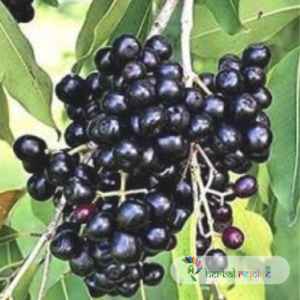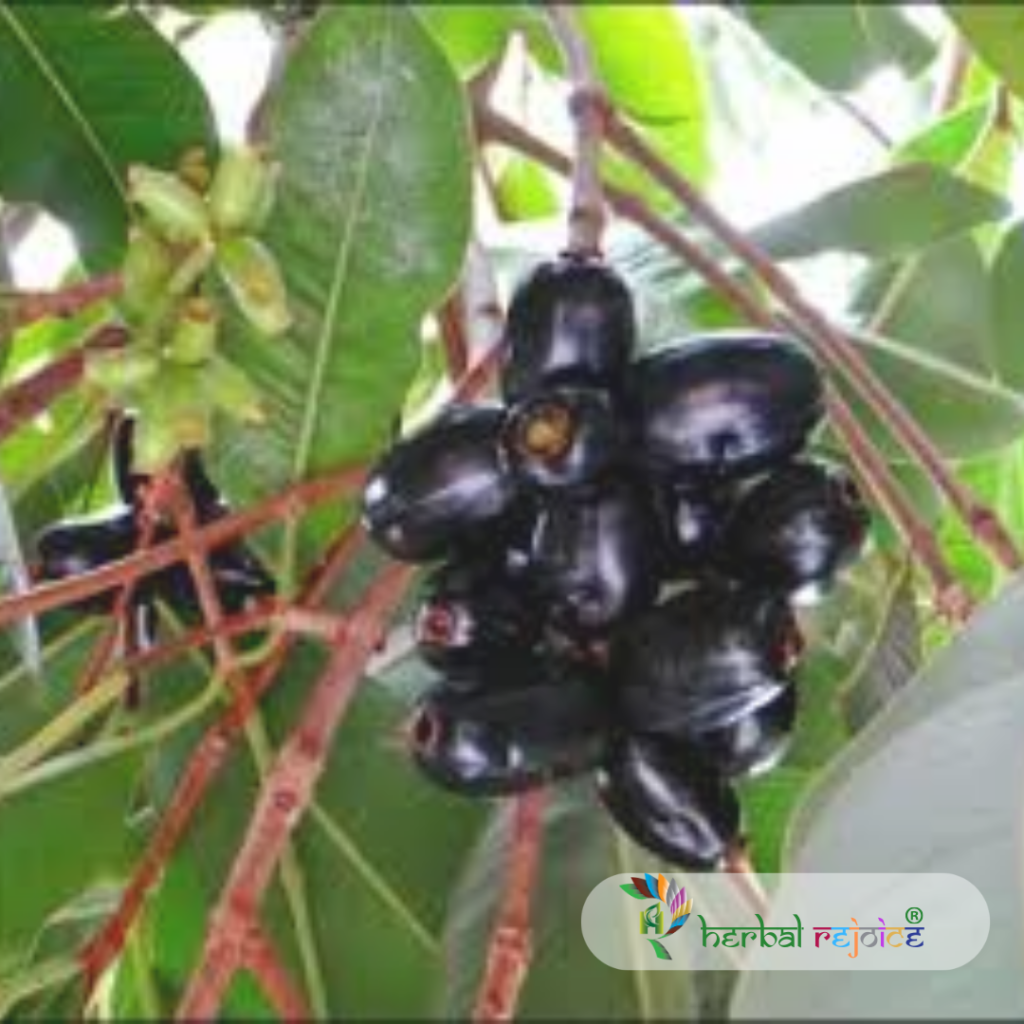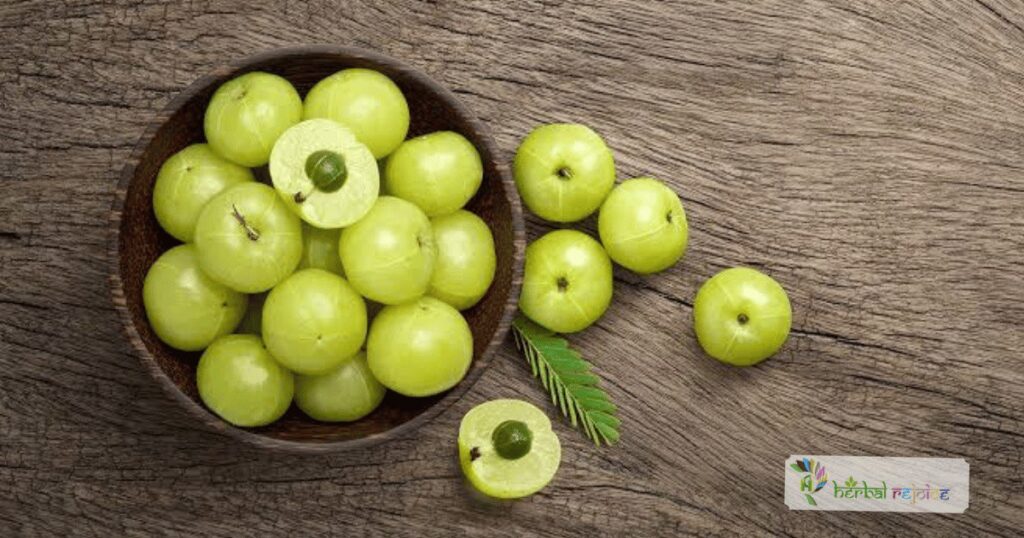Introduction
Java Plum, scientifically known as Syzygium cuminii (Linn.) Skeels, is a fruit-bearing tree native to India and belongs to the Myrtaceae family. It is also known as Jambolan or Black Plum and has various medicinal properties in Ayurveda and other traditional medicine systems. In this article, we will explore the different uses, benefits, and medicinal properties of Java Plum, along with its dosage recommendations.
Habitat and Names
Java Plum is cultivated throughout India, thriving in diverse climatic conditions up to an altitude of 1,800 meters. In English, it is known as Java Plum, Jambolan, or Black Plum. Ayurvedic names include Jambu, Mahaaphalaa, Phalendraa, and Surabhipatra. In Unani, it is referred to as Jaamun Siddha and in Tamil as Naaval.

Traditional Uses and Medicinal Properties
1. Stomachic and Carminative: The fruit of Java Plum has stomachic and carminative properties, aiding digestion and relieving flatulence and bloating.
2. Diuretic: Java Plum fruit acts as a diuretic, promoting urine production and helping to eliminate toxins from the body.
3. Antidiarrhoeal: Both the bark and seed of Java Plum possess antidiarrhoeal properties, making them useful in treating diarrhea.
4. Hypoglycemic: The seeds of Java Plum have been traditionally used to lower blood sugar levels. However, more research is needed to establish its efficacy.
5. Antibacterial: The leaves of Java Plum have antibacterial properties, offering protection against bacterial infections.
6. Antidysenteric: Java Plum leaves are also used as an antidysenteric, helping to alleviate symptoms associated with dysentery.
Key Applications and Recommendations
1. Acute Diarrhea: The bark of Java Plum is recommended for treating nonspecific acute diarrhea. It can also be used topically for mild inflammation of the oral-pharyngeal mucosa or mild superficial skin inflammation.
2. Diabetes and Related Conditions: Java Plum seed has shown potential in managing diabetes and associated conditions like atonic and spastic constipation, pancreatic diseases, and gastric complaints. However, the German Commission E has classified it as an unapproved herb due to inconsistent research findings on its blood sugar-lowering effect.
3. Hemorrhagic Diseases: The Ayurvedic Pharmacopoeia of India recommends the use of Java Plum bark in treating acute diarrhea and hemorrhagic diseases.
4. Hyperglycemia and Polyuria: Java Plum seed is beneficial in managing hyperglycemia (high blood sugar levels) and polyuria (excessive urination).
Chemical Composition
Java Plum contains various bioactive compounds, including bergenin, gallic acid, ethyl gallate, anthocyanins, citric acid, malic acid, and tannins. The seeds are rich in tannins, ellagic acid, gallic acid, beta-sitosterol, and essential oil. The stem bark contains friedelan-3alpha-ol, kaempferol, quercetin, betasitosterol, gallic acid, friedelin, betulinic acid, eugenin, and epi-friedelanol. The leaves contain aliphatic alcohols, sitosterols, betulinic acid, and crategolic acid. The flowers contain triterpenic acids – oleanolic acid and crategolic acid. Phenols like methylxanthoxylin and 2,6-dihydroxy-4-methoxyacetophenone have also been isolated from the plant and seeds.
Research Findings
1. Hypoglycemic Activity: Studies have shown that Java Plum seed extract exhibits hypoglycemic activity in both normal and alloxanized rabbits, with a reduction in blood sugar levels.
2. Anti-inflammatory and Analgesic Effects: The chloroform fraction of Java Plum seed extract has potent anti-inflammatory, antipyretic, and analgesic activities. It significantly reduces inflammation in exudative, proliferative, and chronic phases and exhibits anti-arthritic effects.
3. Antibacterial Property: The water extract of Java Plum demonstrates antibacterial activity against S. boydi and S. dysentrae, making it useful in the treatment of dysentery and diarrhea.
4. Hepatoprotective Effects: Oleanolic acid, found in Java Plum flowers, acts as a strong protector against adriamycin-induced lipid peroxidation in the liver and heart microsomes.
Dosage Recommendations
For decoction, the recommended dosage of Java Plum stem bark is 10-20 grams.
Conclusion
Java Plum (Syzygium cuminii), a fruit-bearing tree native to India, is celebrated for its extensive medicinal properties in traditional medicine systems like Ayurveda and Unani. Known for its stomachic, diuretic, antidiarrhoeal, hypoglycemic, antibacterial, and antidysenteric effects, various parts of the plant, including the fruit, bark, seeds, and leaves, offer a wide range of therapeutic benefits. The bioactive compounds present in Java Plum contribute to its efficacy, particularly in treating digestive disorders and managing diabetes. While traditional uses are well-documented, further research is essential to validate its safety and effectiveness in modern healthcare, ensuring that Java Plum can be safely integrated into holistic health practices.
Frequently Asked Questions
What is Java Plum?
Java Plum, scientifically known as Syzygium cuminii, is a fruit-bearing tree native to India. It is commonly referred to as Jambolan or Black Plum and belongs to the Myrtaceae family.
What are the traditional uses of Java Plum?
In traditional medicine, Java Plum is used for its stomachic, carminative, diuretic, antidiarrhoeal, hypoglycemic, antibacterial, and antidysenteric properties.
What parts of the Java Plum are used medicinally?
The fruit, bark, seeds, and leaves of Java Plum are used for various medicinal purposes. The bark is particularly noted for treating diarrhea and hemorrhagic diseases, while the seeds help in managing blood sugar levels.
What are the key chemical compounds in Java Plum?
Java Plum contains several bioactive compounds, including bergenin, gallic acid, anthocyanins, tannins, and various triterpenic acids, which contribute to its medicinal properties.
Is Java Plum effective for diabetes management?
Java Plum seeds have shown potential in lowering blood sugar levels, but more research is needed to confirm its effectiveness. It is classified as an unapproved herb by the German Commission E due to inconsistent findings.
What are the dosage recommendations for Java Plum?
For a decoction, the recommended dosage of Java Plum stem bark is 10-20 grams. It’s advisable to consult a healthcare professional for personalized dosage recommendations.
Are there any side effects of using Java Plum?
While Java Plum is generally considered safe, excessive consumption may lead to gastrointestinal issues. It’s best to consult with a healthcare provider before starting any new herbal remedy.
How is Java Plum prepared for medicinal use?
Java Plum can be prepared as a decoction using its bark or seeds. The decoction can be consumed or applied topically for certain conditions.
Where can I find Java Plum?
Java Plum is commonly cultivated in India and can be found in many regions with suitable climatic conditions. It is also available in herbal stores or online.
Can Java Plum be used for any skin conditions?
Yes, the antibacterial properties of Java Plum leaves make them useful in treating skin infections and dysentery-related symptoms.


